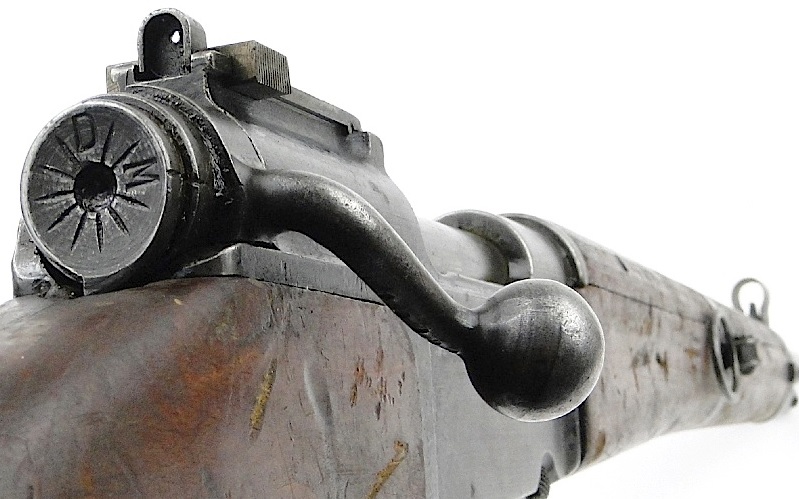During the 1920s and 30s, the French Military undertook an extensive project of re-organising and updating their small arms. Although this seems rather contrary to the Treaty of Versailles, the French had a real hodge-podge of weapons after WWI.
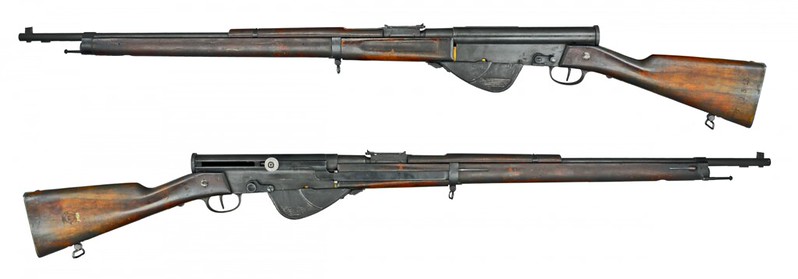
The Infantry rifle program had three tiers: Firstly to convert all of their existing rifles to a new cartridge 7.5mm rimless, a semi-auto rifle for frontline combat troops to follow up on the largely successful experience of the RSC1917 during the Great War and finally, when these developments took longer than expected, a new bolt-action in the new cartridge.
This bolt-action was designed to be a simple, cheap second line rifle to equip those not needing a semi-auto.
In spite of development starting in the 20s, the new rifle was adopted, as the name suggests, in 1936.
This rifle is an integral magazine, stripper clip fed rifle of epic simplicity, with 65 parts only. This was designed to have minimal user-operable and modifiable parts (what today may be called ‘soldier proof’), with most of these being the bolt and its components for cleaning.
The sights were armourer adjustable, with a simple elevation adjustment for range for use by the soldier. These were a rear mounted aperture and chunky front post protected by wings. Later versions had a fully encircled foresight.
The bolt handle is bent forward to be above the trigger for faster cycling, reminiscent of the Metford and Lee Speed series of rifles.
The locking lugs are at the back of the bolt, in the hope that they would be less prone to mud fouling and the bolt itself could be removed and stripped without tools.
An interesting feature carried over from previous French small arms: the MAS36 lacked a manual safety. The French taught soldiers to carry the rifle with an empty chamber, full magazine, so a manual safety was unnecessary.

The MAS40, France’s intended frontline rifle.
French rifle manufacture accelerated in the lead up to the German invasion in 1939/40, and a good number of MAS 36s were in solder’s hands by this time. The MAS 40 semi automatic being just ready for adoption but not for production, the MAS 36 was the most modern rifle available.
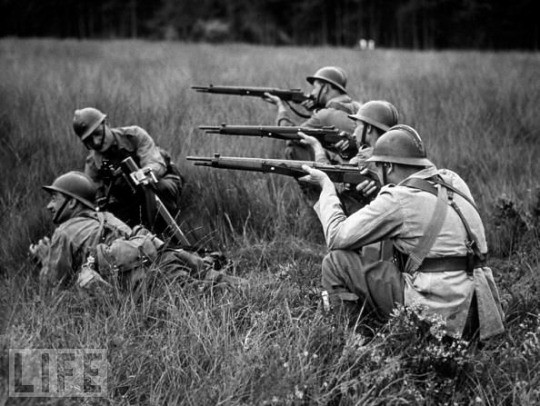
With the capitulation of France, the MAS 36’s future looked bleak. The Vichy French kept theirs, Germany captured some and some made their way out of Dunkirk. A handful even ended up with the Resistance.

In use with Axis forces, here Latvian SS.
They saw service in some remaining French Colonies and some very limited use by the Germans. Postwar, the French picked up production again very quickly, producing the standard rifle, paratroop version as well as versions to fire French 50mm or 22mm NATO standard rifle grenades. The ’36 was sent out to Indochina from 1946 with French forces where it was used against Viet-Minh forces effectively until their war aid from the Soviets improved from bolt-actions to SKS self-loading rifles and AK47s. The ’36 was passed over to local forces and captured in reasonably large numbers by Viet-Minh.

The paratroop version, shortened, lightened and with a folding aluminium buttstock.
The French were not finished with the rifle however. In Algeria and Morocco, it saw extensive use with French forces throughout the conflict even after the self loading MAS 49/56 started to be made available. It still took until the 1970s before this prewar rifle was relegated to its proper (and originally intended) place in the reserves.

A MAS49/56, the replacement
The penultimate version of the ’36 was developed by the Navy for line throwing, these were still in use during Desert Storm and are likely still in storage, with the last being a .22 conversion for training.
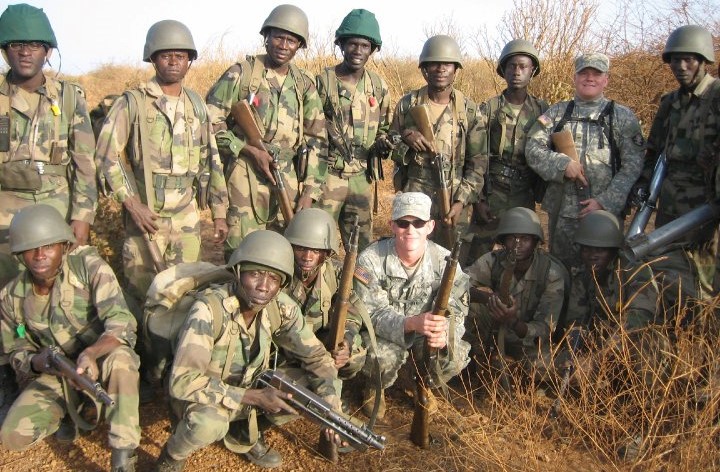
Senegalese soldiers with US Officer Cadets on exercise, 2009.
The MAS 36 ended up being distributed to and used by former French colonies in the main, with the highly unstable Central African Republic being the last to use it as a frontline combat rifle officially. It still serves in a number of countries as a second line or unofficial arm for militia units.
Or it did, until the Syrian Civil War. It was still in use as late as 2015 there with use only tapering off due to ammunition sourcing issues.
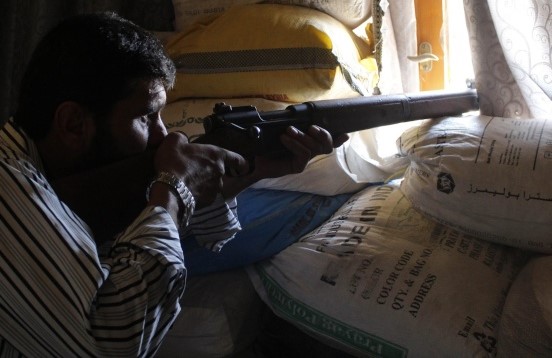
I am of course working on an airsoft MAS-36. It is VSR based and will use the MkII magwell, 3D printed parts and original woodwork.
I would very much like to recommend these articles 1 and 2 if you want to read more about MAS 36 use.
You will be able to follow the build progress here as it is published.
If you are interested in this project or have an idea of your own, drop us a line on enquiries.vintageairsoft@gmail.com to discuss. ‘Like’ our Facebook page or follow the blog to get regular updates on projects and interesting videos and articles.
Don’t forget you can buy our smaller items via Etsy. Our larger items can be found here.

